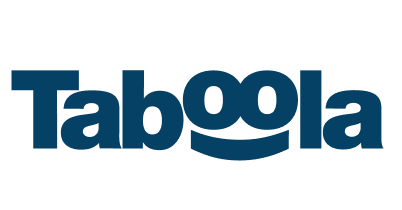
Career Planning
Career planning is serious stuff. Once an employee decides to forge ahead with a chosen career path, they and their employer will devote a lot of resources to it. But if the target of the plan is wrong – i.e., the worker’s long-term career goal – then all of that work could be for nothing. That’s why it is crucial to carefully select the most suitable employee development journey.
What Is Career Planning?
Career planning is a central component of a career management process. To clear up the terminology a bit, let’s look at some basic definitions.
Career management is all of the activities undertaken by a company to ensure that an employee defines and reaches their chosen career path. Career management requires significant effort from HR and company executives to devote all the resources needed to advance workers through the organization.
Career development is the process that the employee sees as they work with HR to build a career path. The end result of this step is a summary of the decisions made and future actions required in a career development plan template.
Career planning is the phase of career development when HR and the employee have an in-depth discussion about where they want the whole plan to lead. Essentially, it forms the first few action items of a career pathing process, particularly the “matching” aspect. The basic question asked during the career planning process is, “What do you want to do?” This answer should be the result of a negotiation between HR and the employee.
What Is Changing in Career Planning?
In some organizations, the emphasis of career planning and development is on what the company wants. HR shows up to the career planning meeting with a shopping list of HR objectives based on an organizational development strategy. The discussion centers on filling current and upcoming gaps in the company.
But this approach is falling out of style. Because we are all in a war for talent, it’s a smarter move to start off by talking about what the employee wants. The current job market is in the employee’s favor, so making their priorities into an essential factor can:
- Ensure their cooperation with related initiatives like talent development or as part of an employee development plan
- Make them feel as though they are in charge (because they kind of are!)
- Optimize the chances that their skills and attitudes are aligned with the chosen path
Why Is Career Planning Important?
An effective career planning initiative offers important benefits all around.
Employees
Career planning motivates a person to think more about their skills, preferences, dislikes, and future. It might be the case that you were interested in one kind of job when you started with your current employer. But maybe you’ve been part of a soft skills training course and learned that you have a whole set of skills that you’d like to try out in the workplace.
Having a direction is also important. Nobody wants to put serious effort into a job yet have no plan to reap the benefits of that effort. Career planning lets you know what to expect in the long term for the work you are doing today, if you stick with it.
Finally, some of the more agreeable people out there might be happy, for at least a little while, to stay where they are in a company. There are also those out there who don’t feel a need to progress. But these types of attitudes are usually a short-term thing. Eventually, people gain the experience required to move up and will also want more out of their job to support a family and/or a higher standard of living as they get older.
Businesses
Of course, investing in employees can deliver all kinds of advantages. A lack of development opportunities is the top reason for leaving a job, so L&D is essential for increasing retention. Plus, employees who get the skills and knowledge that follow a career planning program will be more engaged.
Strategic career planning can also serve many organizational objectives. In the short term, companies can assign employees-in-training to take over when a relevant role becomes vacant due to turnover or illness. Planning also gives HR an idea of where their learning resources will go, and provides them with the right employees for advancement opportunities like social networking and cross-training. Lastly, the biggest benefit of career planning is that it is vital for succession.
The Career Planning Process – Getting Started
The goal of career planning is to, well, set a goal, consisting of short- and long-term career objectives. HR acts almost like a coach, by asking the worker about what interests them, and figuring out what suits them.
The best way to start the process of career planning should happen even before the employee sits down with you. On some previous occasion, the employee should have attended a workshop or onboarding session where the structure of the company is explained. And, because we all forget details, HR should host open houses to explain opportunities throughout the company.
Using a Career Planning Template
Many HR professionals work with a template to stay organized and provide an easy way for the employee to be informed. There might be a lot of back and forth during the meeting(s), and it helps to keep track of what is decided at the end of each discussion.
The following subjects to be explored are also the basic headings of a classic career plan template:
Interests
A typical question to ask here is, “What role in the company really attracts you?” But the more revealing question is, “Why?” If the employee talks mostly about salary, that’s a bad sign. Instead, if they relate a career goal to their personal interests, or moral values, or a long-term ambition, then you are both off to a good start. Look for an answer that shows real contemplation and a spark of passion.
Skills
This subject will determine how steep the climb will be up the career ladder. The point here is to understand if the employee has the right skills for the roles that they are thinking about. It definitely helps to have done a skills gap analysis beforehand so that you can see if there is a potential match.
This step is also where some good coaching comes in handy. If there isn’t much of a match between interests and skills, then the HR person should gently steer the employee in a more suitable direction.
Preferences
By the end of the initial process, you will probably end up with a list of possibilities. To establish priorities, you might go back to the “interests” stage. You can also fill out a framework such as “SMART” to organize the details of the prospective career plan. For example, the “T” in SMART can be used to explain how much time is involved to reach the end point of each career choice.
Following Up
That’s pretty much where the official phases of career planning end. But before commencing with the next part of career pathing, it’s a good idea to take a few more steps to make sure that the goals are right for the employee. Consider:
- Skills and aptitude testing to ensure a good fit
- Job shadowing so that the employee sees what their future might be like
- A “confirmation meeting” to explain how the process will go from now on, with an emphasis on what that means in terms of employee commitment, the time it will take to reach each step of the career ladder, and the chances of reaching the end goal
Career Planning Examples
There are several stages of the employee lifecycle during which career planning could be used. Here are a few examples:
At the Beginning of a Career
There are many instances of companies implementing immediate career planning and similar activities, particularly for employees on a management track or as part of a leadership development program. A common practice is to allow such employees to try out different roles, perhaps as part of a job rotation initiative.
When the Employee Wants a New Direction
Veteran employees in particular might want a new challenge, but trying a different tack can also apply to quiet quitters. In these cases, it’s crucial to focus on the employee’s interests. This will make sure that the next role is something that they truly want, and not just a case of rinse and repeat.
When the Organization Wants the Employee to Take a More Appropriate Role
Not everyone is a great fit for every job. But, in the spirit of the growth mindset, organizations should give them more chances. This move can deliver considerable value from employees who have potential but just haven’t found their ideal role yet. In terms of career planning, this is definitely a situation for concentrating on skills.
GrowthSpace Should Be Part of Your L&D Plan
Want your staff to be ready for whatever role they take on? Give them the specific skills they need to succeed. GrowthSpace’s multi-experience talent development platform sets up employees, experts, and experiences at scale to ensure effective L&D programs.


